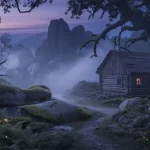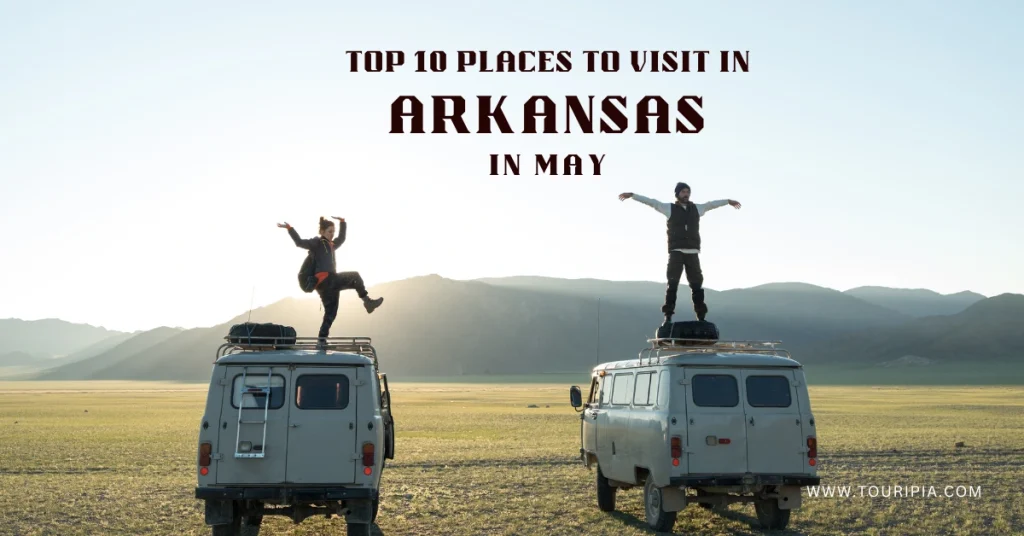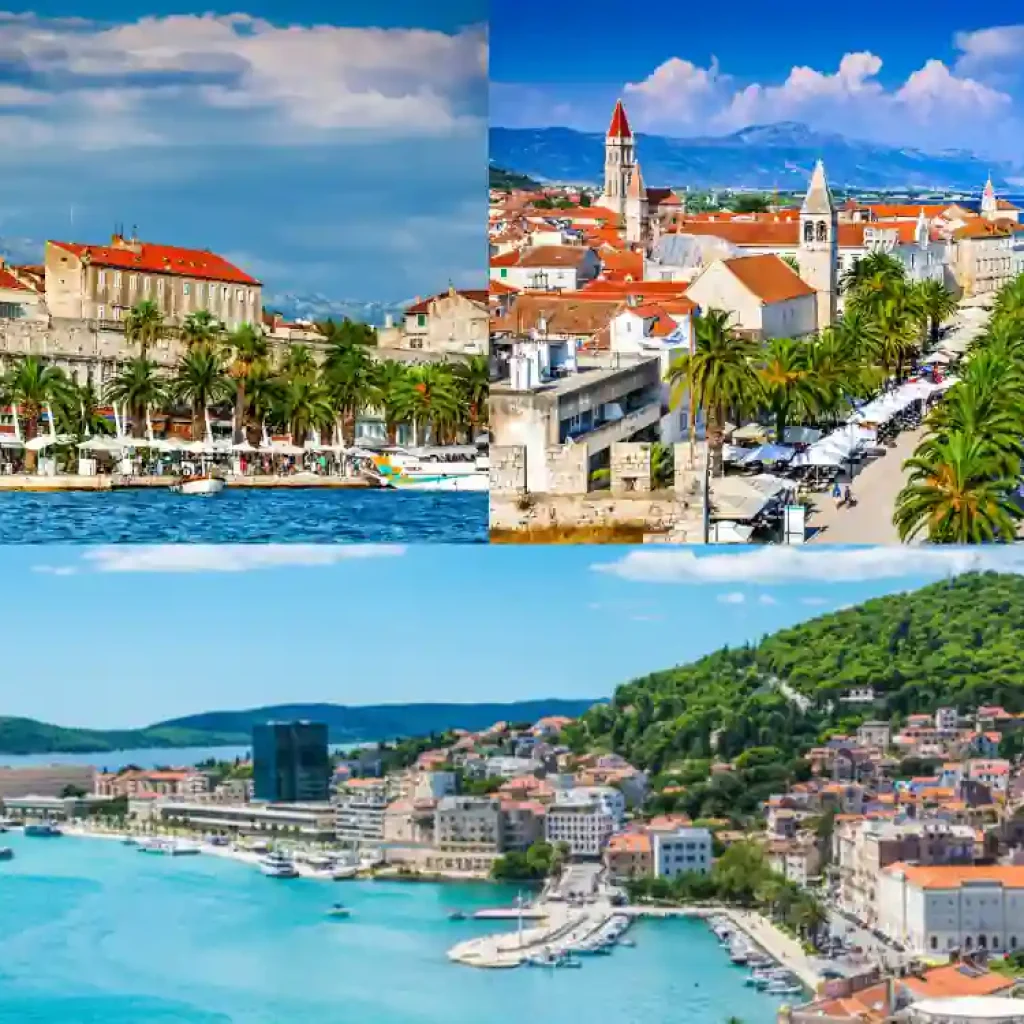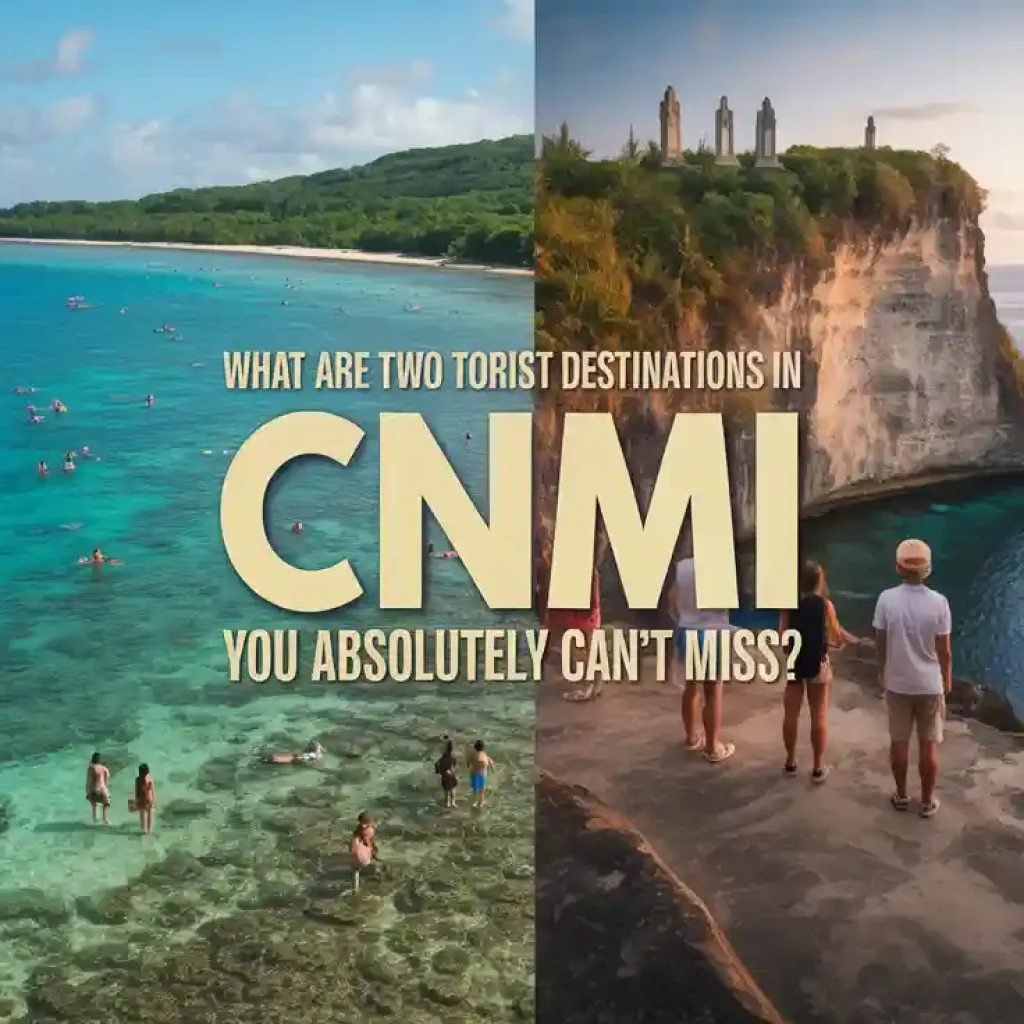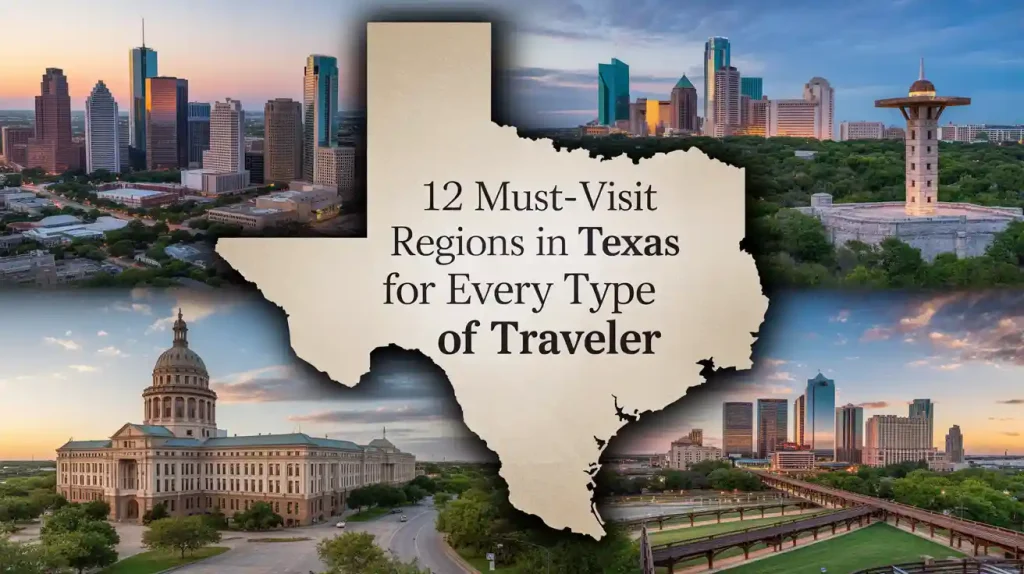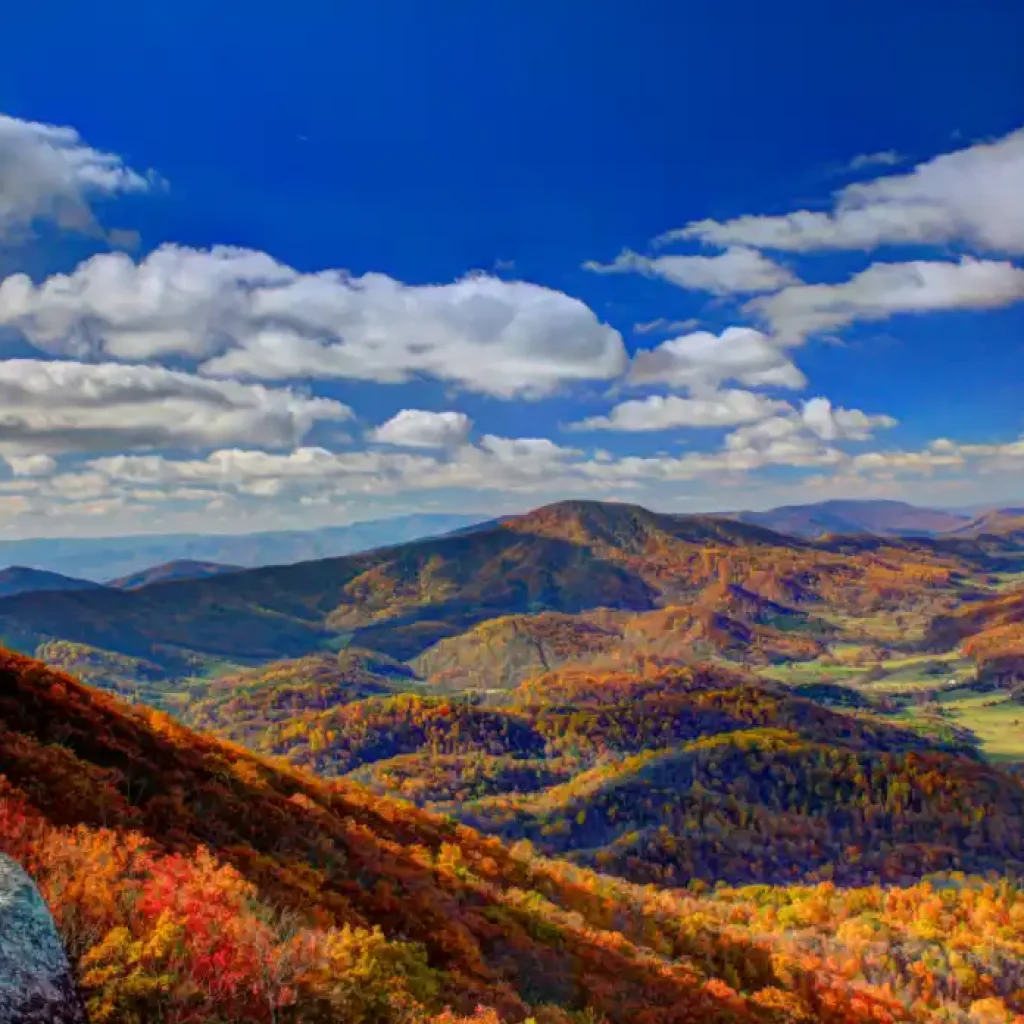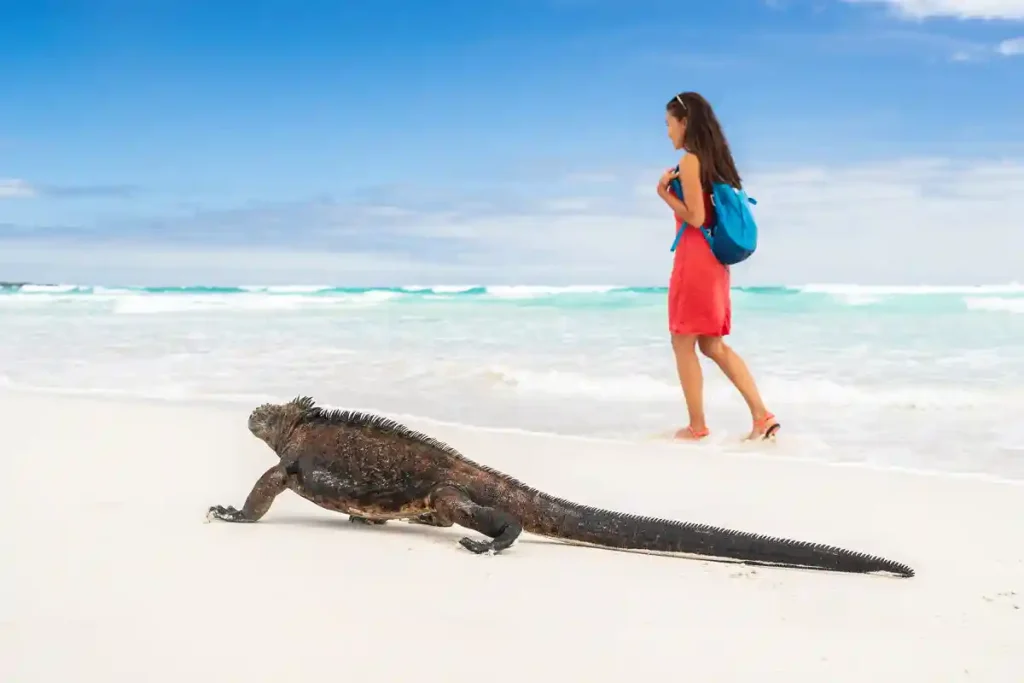My Adventure at Hemlock Cliffs Indiana: Honest Trail Review
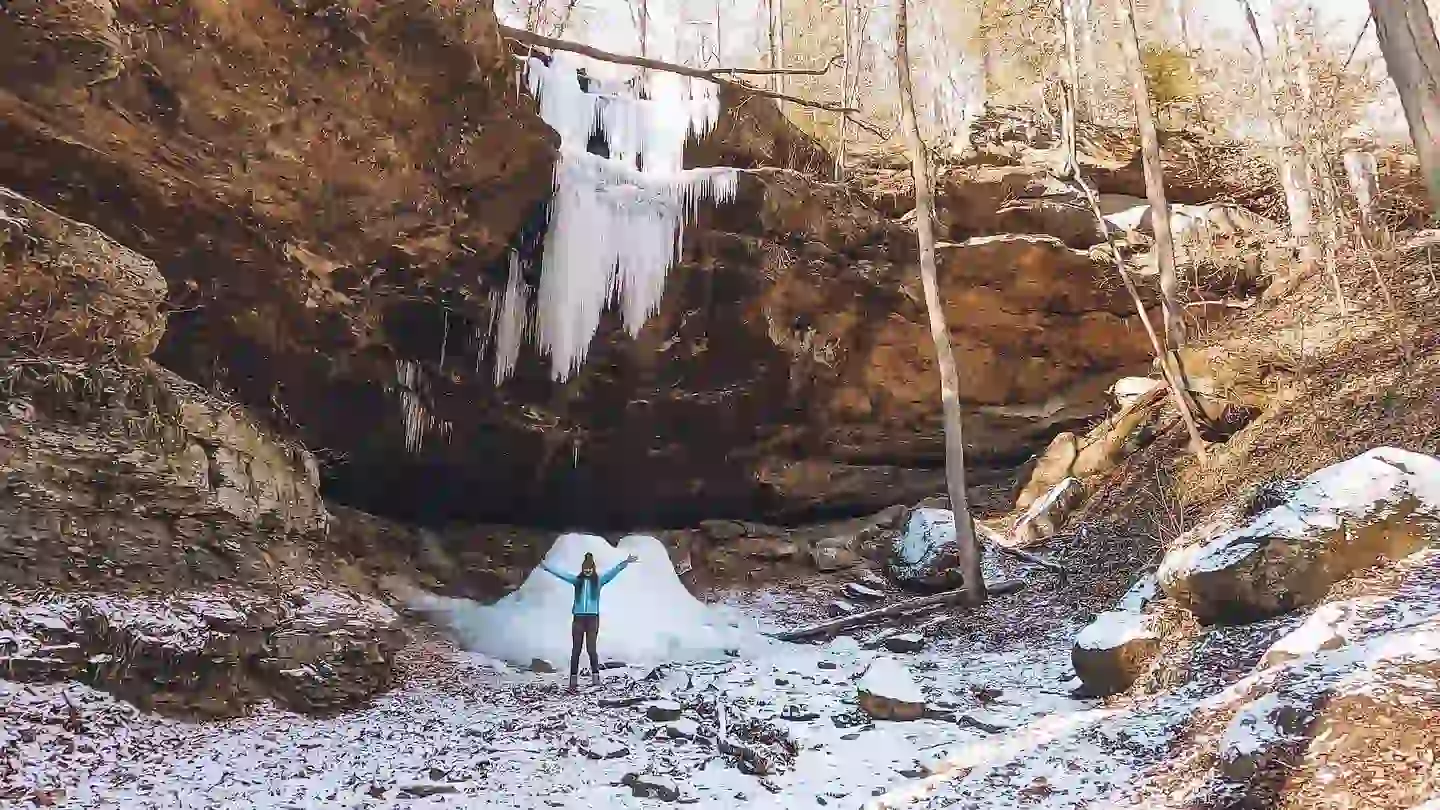
I first came across Hemlock Cliffs Indiana while planning a road trip through the quieter corners of the Midwest, a part of the country that hides more treasures than most travelers realize.
Unlike the well-known parks in northern Indiana, this trail popped up in conversation with a fellow hiker I’d met near Patoka Lake. He swore it was one of the most underrated spots in the Hoosier National Forest — a short but striking hike filled with sandstone cliffs, box canyons, and waterfalls that only appear after a good rain.
My curiosity was piqued. I’d spent years wandering trails across the U.S., from the rugged deserts of Utah to the lush forests of Vermont, but I’d never seen anything quite like the descriptions of Hemlock Cliffs Indiana.
The promise of solitude and the chance to step into a landscape where hemlock trees somehow thrive in southern Indiana, far from their usual northern ranges, was reason enough for me to detour.
What I’ll share here is not a polished brochure description, but an honest, boots-on-the-ground review. From the slippery stone steps to the shady rock shelters, from the fleeting waterfalls to the sound of birds echoing through the canyon, this hike left me with impressions worth passing on.
If you’re curious about scenery, difficulty, and practical tips before heading out, consider this a trail-tested guide to Hemlock Cliffs Indiana.
Setting the Scene: Where Are the Hemlock Cliffs Indiana?
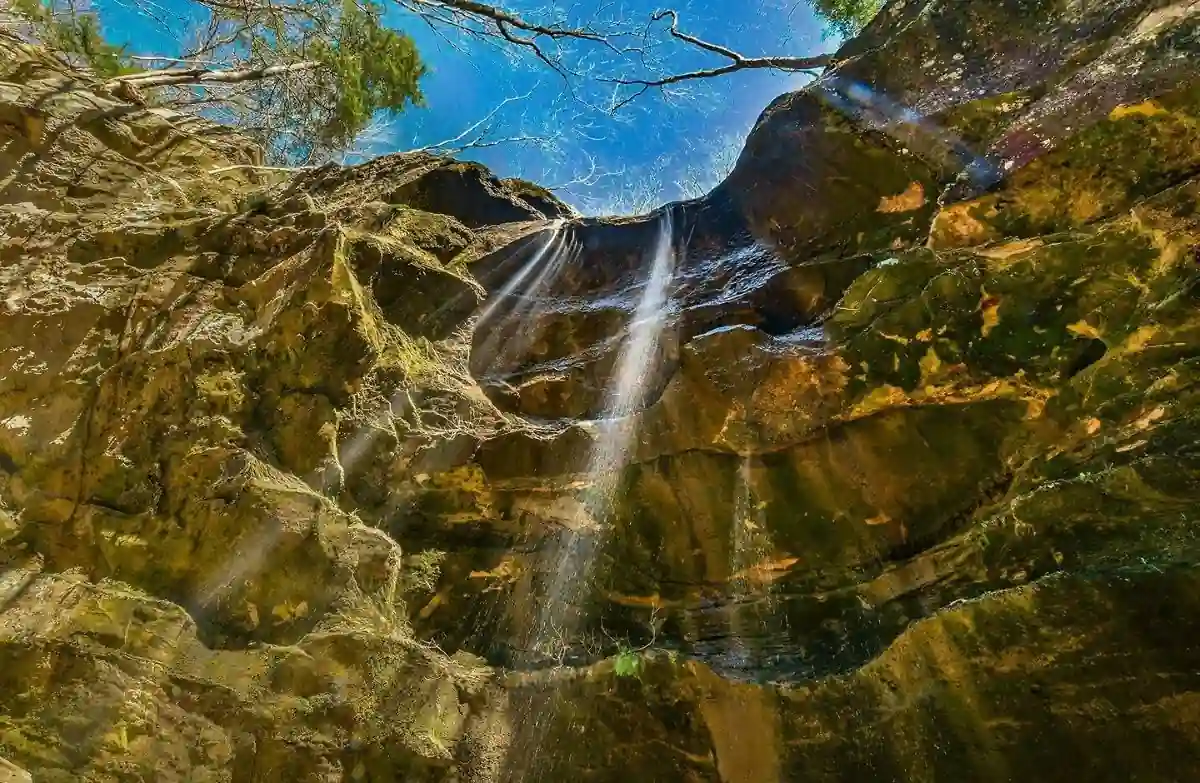
The Hemlock Cliffs Trail lies deep in the Hoosier National Forest, tucked into Crawford County. To be precise, you’ll find it off County Road 410 South, not far from State Road 37. It’s a place that feels worlds apart from the rolling farmland and highways nearby.
Geologically, this spot tells a story millions of years old. The cliffs are carved from sandstone and Glen Dean limestone, layered through ages of erosion and weathering of iron ores.
Ephemeral waterfalls spill over the rock ledges after heavy rainfall, leaving behind streaks of color and patterns across the sandstone walls. It’s the kind of natural architecture that makes you stop mid-hike just to trace the lines with your eyes.
But the real curiosity here is ecological. Eastern hemlock trees — which usually belong in the cooler climates of Appalachia or the northern U.S. — thrive in this shaded canyon.
The U.S. Forest Service has posted interpretive signs along the trail explaining how the cool, moist microclimate of the box canyon allows this unusual ecosystem to exist. It’s a rarity in Indiana, and standing beneath the dark green canopy, you can feel the temperature drop.
For anyone wondering “where is Hemlock Cliffs?”, the answer is simple: it’s hidden in plain sight within southern Indiana, yet it feels more like you’ve stepped into a northern forest.
First Impressions on Arrival
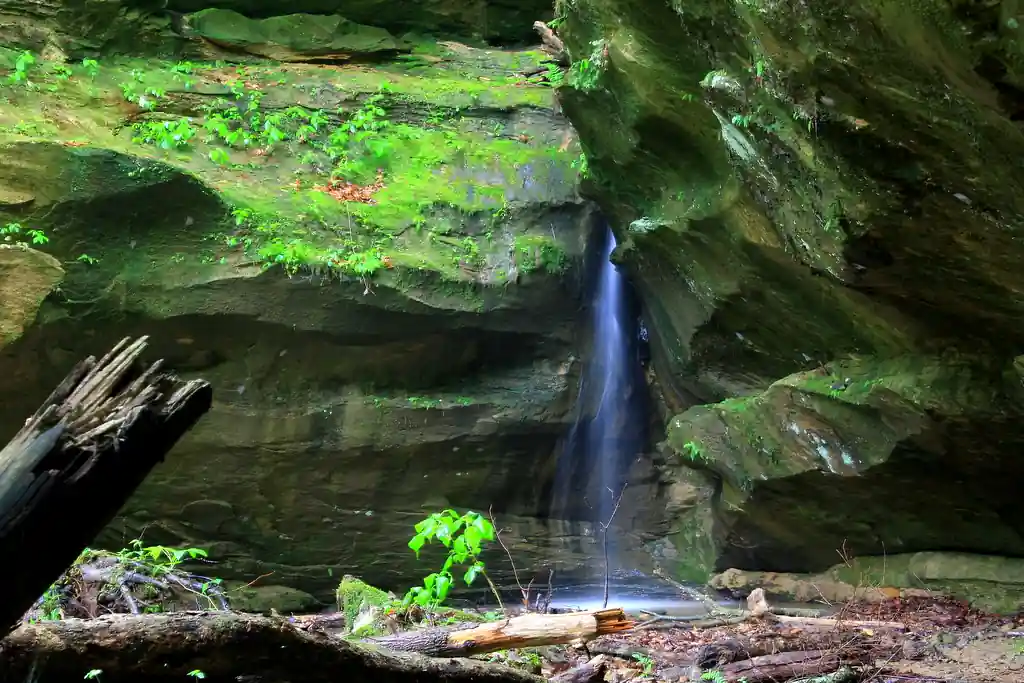
The drive in is half the experience. Once you leave the main highway, the route winds down narrow county roads, eventually leading to a modest parking lot that serves as the trailhead.
The signage is clear — a simple Forest Service board marks the start, along with maps and fire danger information. Don’t expect big facilities here; there are no restrooms or water sources at the parking lot. It’s just you, your gear, and the forest.
The atmosphere struck me immediately. The stillness was almost uncanny compared to the usual buzz of state parks. I arrived in the early afternoon, and aside from two cars tucked in the lot, the place felt deserted. The crunch of gravel beneath my boots and the occasional rustle of leaves in the breeze were the only sounds until I stepped closer to the trail.
Standing at the edge of the trail loop, I felt that mix of anticipation and curiosity that always comes before a hike into unknown terrain. This wasn’t just another day on a Midwest trail — it already had that air of discovery, the sense that you’re about to walk into a hidden chapter of Indiana’s natural history.
Hiking the Hemlock Cliffs Trail: Step-by-Step Review
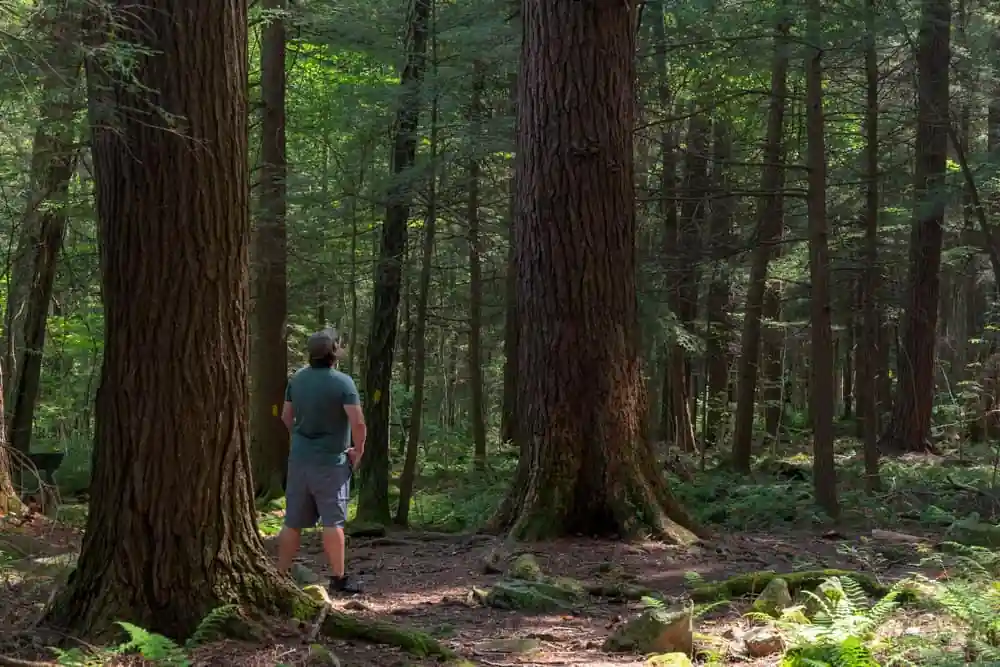
The Hemlock Cliffs Scenic Trail is a loop, roughly 1.2 miles in length. While it sounds short, don’t underestimate it — the terrain packs variety and a touch of challenge into every bend. Here’s how it unfolds:
1. Trailhead & Descent into the Canyon
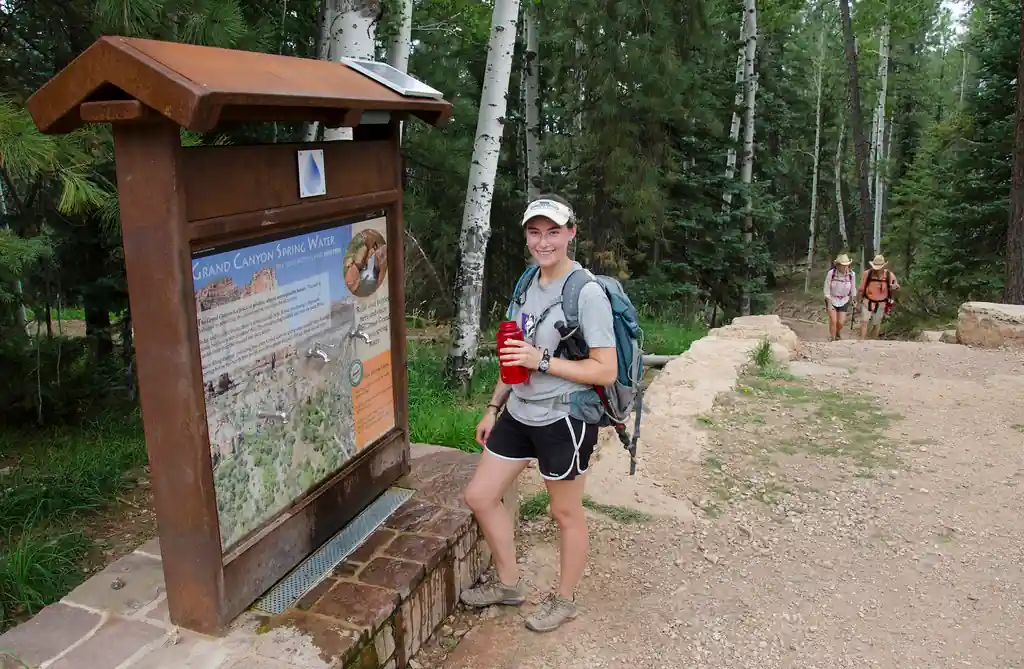
From the trailhead, the path begins gently, wide enough to ease you in. The dirt trail, worn by years of hikers, soon narrows as you descend into the box canyon.
Within minutes, sandstone bluffs rise around you, giving the impression you’ve stepped into an ancient amphitheater shaped by water and time.
2. Waterfalls & Rock Formations
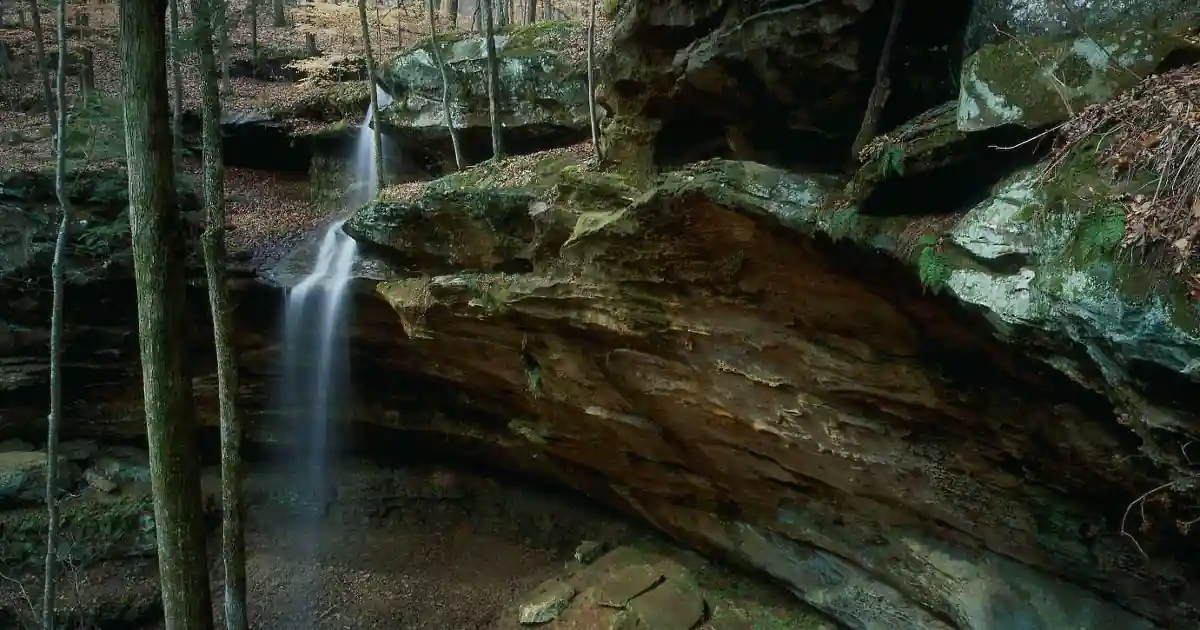
The first real reward comes when the seasonal waterfalls appear — best after spring rains or summer storms. Water trickles (or sometimes pours) over the sandstone ledges, feeding moss-covered rocks below.
These cliff overhangs and rock shelters were once important to Native American communities who used them for protection. Today, they make for some of the best photo opportunities in the Hoosier National Forest.
3. The Hemlock Groves
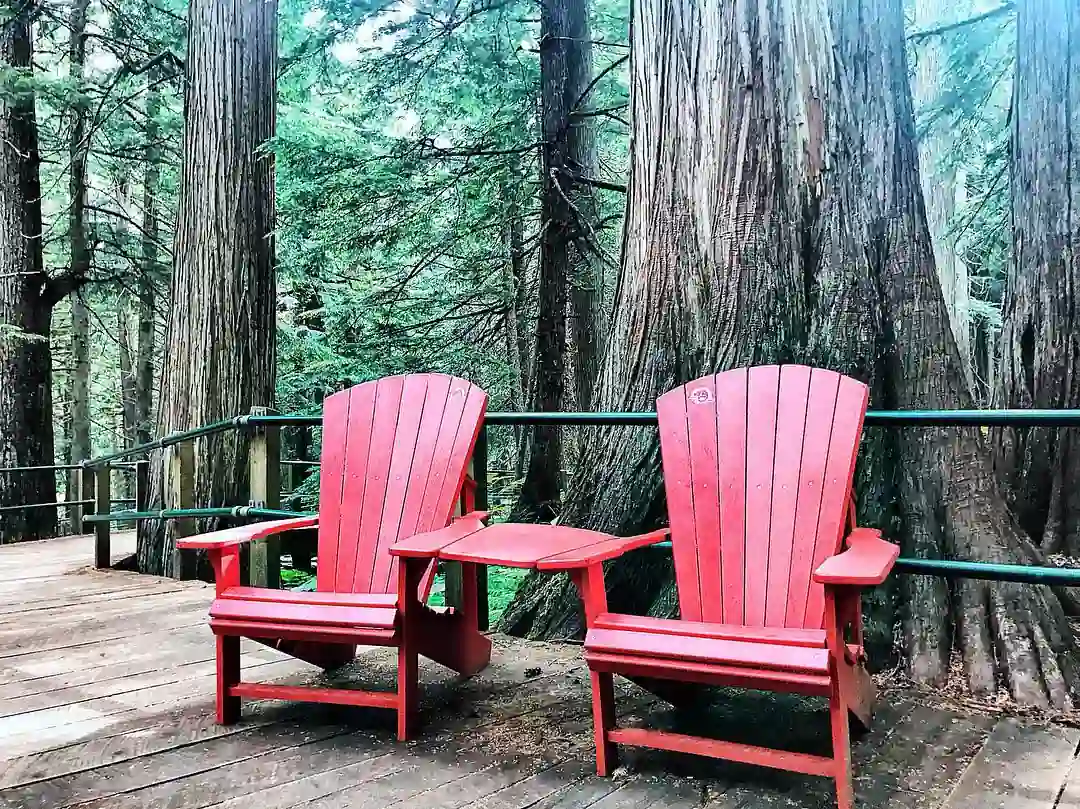
Midway through the loop, you’ll encounter the namesake: dense groves of Eastern hemlock. The shade creates a cool, almost cathedral-like silence.
Birdsong bounces off the canyon walls while wild geranium and mountain laurel peek out from the understory. It feels more Appalachian than Midwestern, a reminder of how unique this microclimate is.
4. Navigating the Terrain
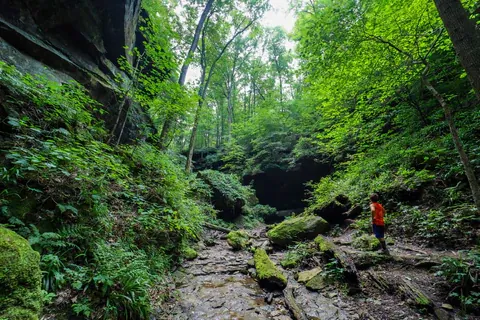
This trail is marked as moderate, and I’d agree. The dirt path can turn muddy, and there are spots where you’ll need to cross small streams or climb rock stairs. After rain, these areas become slippery, so tread carefully. Hiking boots with good grip are essential.
5. Loop Back to Trailhead
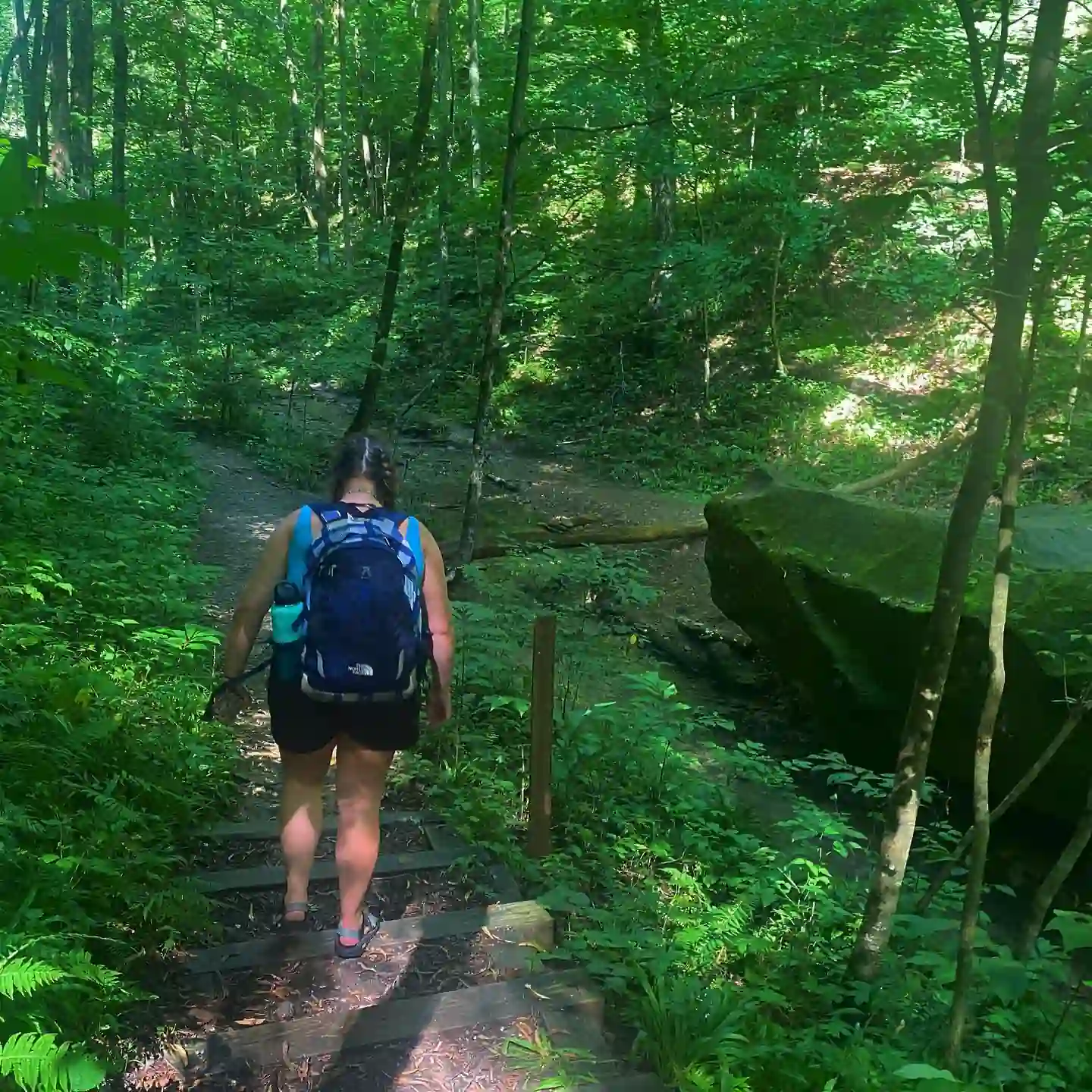
The final stretch takes you up and out of the canyon. Looking back, the sandstone cliffs seem taller from above, their rugged beauty framed by the surrounding forest.
The climb is steady but manageable, and reaching the top comes with that satisfying sense of completion — short in distance, but rich in experience.
Pros & Cons of the Hemlock Cliffs Trail
Every trail has its balance, and Hemlock Cliffs Indiana is no exception. From my time on the loop, here’s the honest breakdown.
Pros:
The scenery is the undeniable star. Few hikes in Indiana offer such a concentrated mix of sandstone rock formations, cliff overhangs, and ephemeral waterfalls within just over a mile.
The presence of hemlock trees in Crawford County adds a surreal touch — it’s almost like discovering a misplaced piece of Appalachia in the Midwest.
The hike is short enough for families yet interesting enough for seasoned hikers. Wildlife viewing is another highlight; on my visit, I spotted a pileated woodpecker hammering into an old tree not far from the Hemlock Cliffs Falls.
Cons:
It’s not without drawbacks. After rainfall, the trail conditions become tricky, especially near the stream crossings and stone steps. The parking lot, though convenient, can fill quickly on weekends, leaving visitors to line up along Trestle Road.
There are no restrooms or water sources at the trailhead, so preparation is key. The remoteness means cell service is spotty, which some might find freeing — but it makes navigation or checking the Hemlock Cliffs Indiana map harder if you didn’t download it in advance.
Balanced out, these challenges are manageable, but knowing them beforehand makes the experience far more enjoyable.
Best Time to Visit Hemlock Cliffs
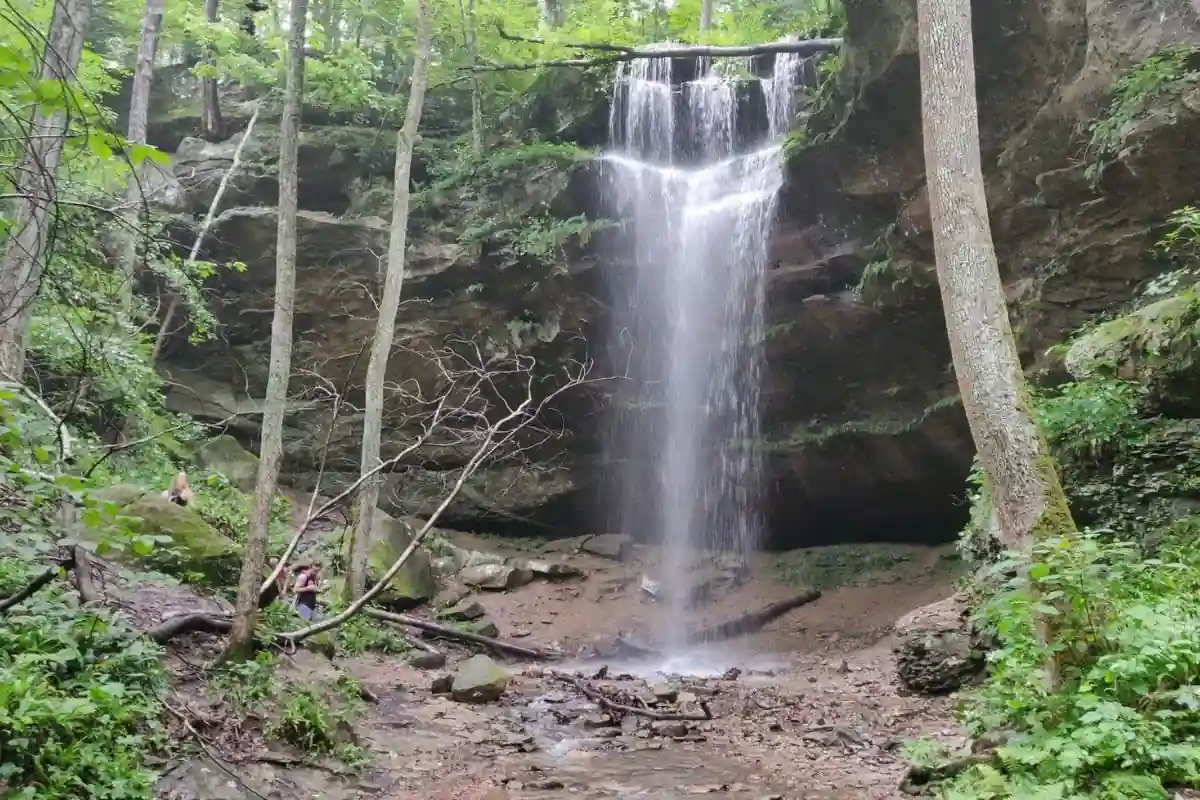
Timing matters at Hemlock Cliffs in Hoosier National Forest, and after a few trips in different seasons, I can confidently say the trail feels different each time.
- Spring: This is the season when the area comes alive. Seasonal waterfalls gush down the sandstone walls, and wildflowers like French’s shooting star and wild geranium scatter across the canyon floor. The cool shade of the hemlock groves makes it one of the most rewarding spring hikes in Indiana.
- Summer: The canyon stays cooler than the surrounding fields, thanks to the hemlock canopy. But the price of shade is mosquitos — bring repellent. It’s also the busiest season, especially on weekends.
- Fall: My personal favorite. The sandstone cliffs glow against the backdrop of red and gold foliage. The moderate climb feels easier in crisp air, and the Hemlock Cliffs trail Indiana loop is far less crowded than Brown County or Turkey Run.
- Winter: Solitude seekers will love it. Icicles cling to the cliff overhangs, and with snow dusting the sandstone, the landscape feels almost otherworldly. Trail conditions can be icy, though, so hiking poles help.
The Hemlock Cliffs weather is notoriously changeable. On one visit, a sudden storm turned trickling streams into rushing currents within an hour. My advice: check conditions ahead, and always bring layers.
Practical Tips for Hikers
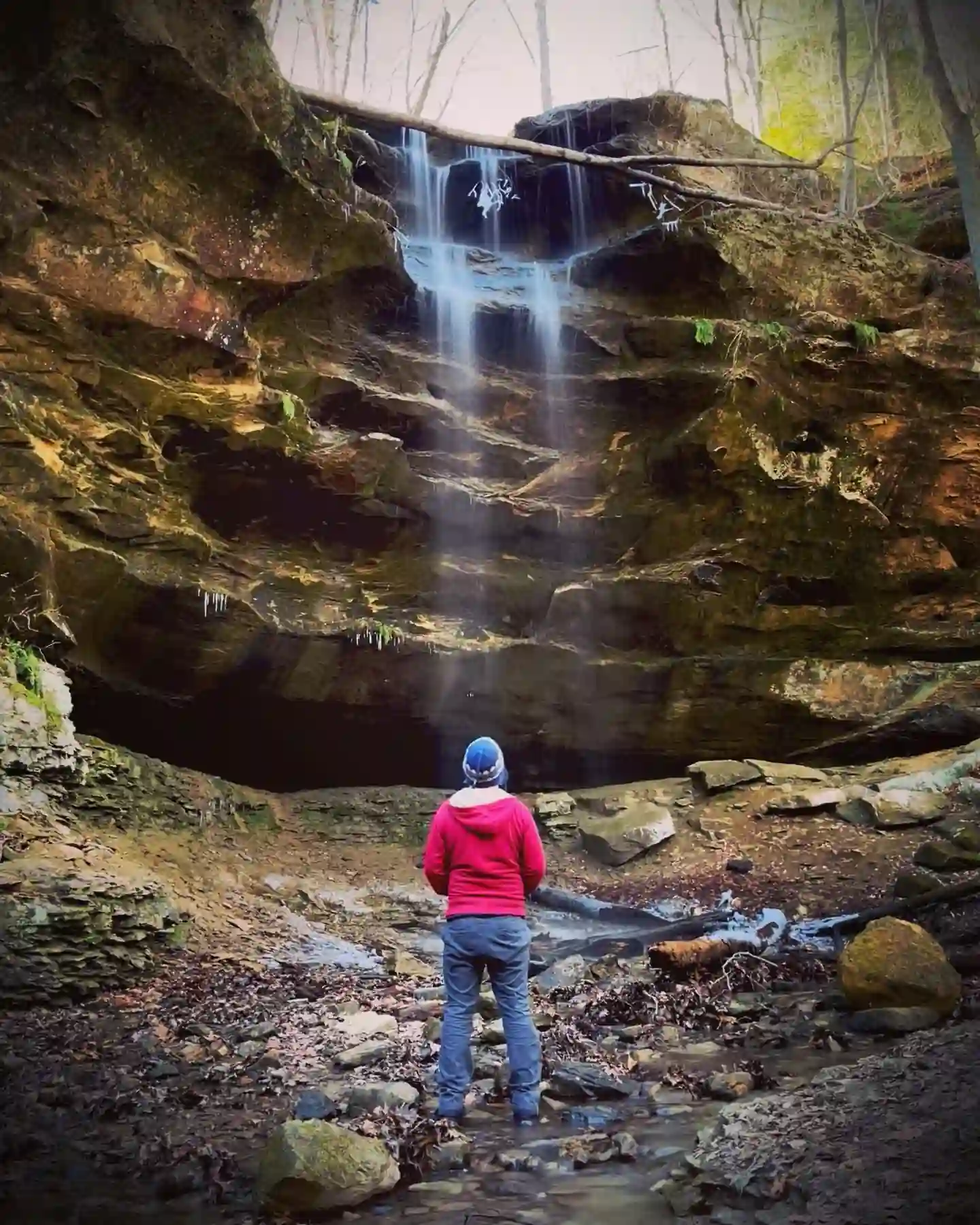
A hike here is rewarding, but it pays to prepare. Based on my experience, here are a few tips to make the most of your time at Hemlock Cliffs Indiana.
- Footwear: Wear sturdy hiking boots with good traction. The rock stairs and muddy stream crossings are no joke after rain.
- Supplies: Bring water and snacks. There are no vendors, no restrooms, and no fountains. The nearest services are in English, Indiana — about 10 miles away.
- Timing: Start early if you want the trail to yourself. By mid-morning, the parking lot can get full, especially during peak foliage season.
- Respect the land: The Forest Service stresses Leave No Trace principles. This means packing out trash, staying on designated spur trails, and respecting fragile ecosystems.
- Photography: If you’re hoping for dramatic shots of waterfalls or the sandstone walls, aim for golden light hours — either early morning or late afternoon. The shadows in the canyon can be challenging at midday.
One last point: download or carry a directions to Hemlock Cliffs guide ahead of time. With patchy signal, relying on GPS at the last minute isn’t wise.
Comparing Hemlock Cliffs to Other Indiana Trails
Over the years, I’ve hiked many of Indiana’s popular trails, from the deep ravines of Turkey Run to the cascades of Clifty Falls. Each has its own appeal, but Hemlock Cliffs Indiana stands out for its intimacy.
Clifty Falls State Park impresses with its size and numerous waterfall views, while Turkey Run challenges hikers with rugged sandstone gorges and suspension bridges. Brown County, of course, is famous for fall colors.
Yet Hemlock Cliffs feels like a hidden gem — a smaller, quieter loop that punches above its weight in scenery. The sandstone rock shelters here are more dramatic than those at Yellow Birch Ravine, and the cool hemlock groves give it a distinctive identity.
It’s also less commercialized. There’s no visitor center, no paved trails, no bustling crowds. Just a simple Hemlock Cliffs trail loop, a parking area, and the sense that you’re stepping back in time. For anyone who prefers raw, scenic hikes over developed attractions, this trail rivals — and in some ways surpasses — the bigger names.
Conclusion: My Honest Final Take
After hiking the Hemlock Cliffs Indiana trail multiple times, I’ve come to appreciate it as more than just a short loop. It’s a reminder that hidden beauty doesn’t always require long drives or strenuous climbs.
The sandstone walls, shaded groves of Eastern hemlock, and ephemeral waterfalls all combine to create a setting that feels almost misplaced in southern Indiana.
Sure, it’s not perfect. The trail can be slippery after heavy rain, facilities are nonexistent, and the parking lot on County Road 410 South isn’t big enough for weekend crowds. But those “flaws” are exactly what make it special.
You’re not stepping into a manicured state park; you’re entering a living, breathing canyon system that has sheltered Native Americans, weathered countless storms, and continues to evolve with every season.
If you’re road-tripping through southern Indiana — maybe exploring Patoka Lake Trails or visiting French Lick Creek — make the detour. Pack light, give yourself a couple of hours, and walk the loop slowly.
Stand under the rock shelters, listen to the streams, and notice how the canyon cools as you step beneath the hemlocks. Hemlock Cliffs in Hoosier National Forest is not just a hike; it’s an immersion into one of Indiana’s most underrated landscapes.
Frequently Asked Questions
1. How long does the hike take?
The Hemlock Cliffs trail Indiana loop is about 1.2 miles. With photo stops and exploring the rock shelters, I usually spend 60–90 minutes.
2. Is the trail family/kid friendly?
Yes — the short distance makes it family-friendly, but watch kids near slippery sandstone walls and stream crossings.
3. Are dogs allowed?
Dogs are welcome but must stay on a leash. Bring extra water for them, especially in summer.
4. Is swimming allowed in waterfalls/streams?
No. The waterfalls here are seasonal and shallow. The streams are part of fragile ecosystems — better admired than disturbed.
5. Do I need a permit or fee to enter?
No permits or entry fees are required. The U.S. Forest Service manages it as a free public trail.
6. How long does it take to hike Hemlock Cliffs?
On average, 45 minutes to an hour, depending on pace and trail conditions. After rain, muddy areas may slow you down.
7. What makes Hemlock Cliffs unique?
The presence of Eastern hemlock trees in southern Indiana, combined with sandstone cliffs, box canyons, and seasonal waterfalls, creates an ecosystem rare for this region.
8. What is the hardest hike in Indiana?
While Hemlock Cliffs in Crawford County Indiana is moderate, harder trails exist — like the rugged routes at Turkey Run or the canyon climbs at Clifty Falls.
9. What is the history of Hemlock Cliffs?
Archaeological evidence shows Native American occupation in the area. Rock shelters here likely offered protection, while the canyon’s resources supported seasonal use. Interpretive signs from the Forest Service share details about resource protection and ancient cultural use.
10. Can you swim in Hemlock Falls?
No. Hemlock Cliffs Falls is seasonal, and swimming isn’t allowed. It’s better enjoyed as a scenic waterfall view and photography spot.
11. How many stairs are there to Hemlock Falls?
The stone steps and natural rock stairs vary, but expect several short climbs along the loop, especially when descending into and climbing out of the canyon.
Recent Posts
 A Comprehensive Guide To What To Wear in Marrakech
A Comprehensive Guide To What To Wear in Marrakech Inside the Two Headed Dog Museum: A Strange Exhibit & Travel Tip
Inside the Two Headed Dog Museum: A Strange Exhibit & Travel Tip LAMOTH Museum: Hidden Gem in LA for Travelers & History Fans
LAMOTH Museum: Hidden Gem in LA for Travelers & History Fans 10 Reasons to Read the www.travellingApples.com Blog
10 Reasons to Read the www.travellingApples.com Blog Hidden Appalachian Mountains Folklore: Legendary Myths Every Traveler Should Walk
Hidden Appalachian Mountains Folklore: Legendary Myths Every Traveler Should Walk




